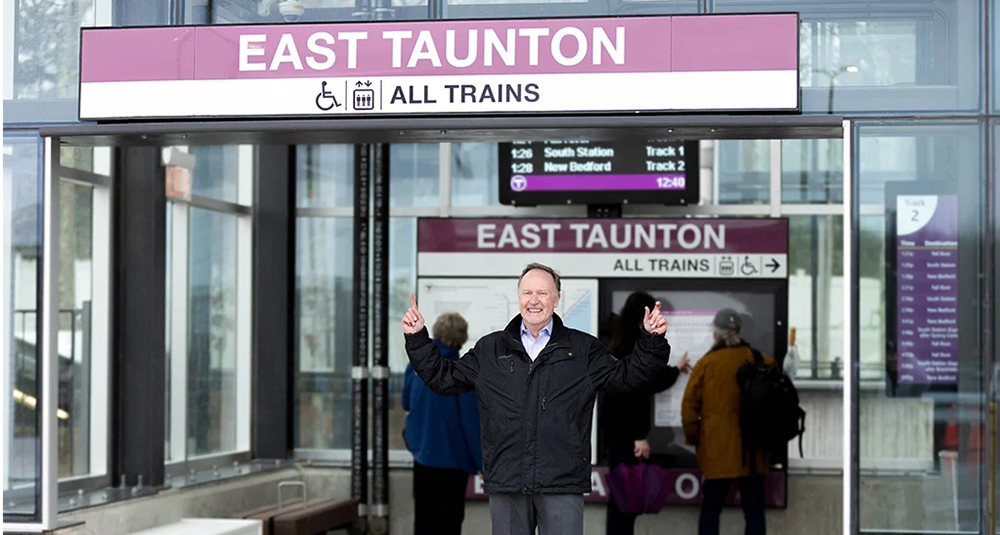Issues regarding leasehold title insurance - by Geoff Norman

Tarlow, Breed, Hart & Rogers, PC
Tenants should consider the necessity of leasehold title insurance policies in many different leasehold circumstances, but especially with regard to ground leases. During the lease negotiation between landlord and tenant, the focus tends to be on the lease terms, the financial substance of the tenant and, if applicable, a non-disturbance/recognition agreement from landlord’s lender, or the ground lessor if the landlord is not the owner of the property.
However, as landlord and tenant work toward the execution of the lease, consideration should be given to the leasehold premises’ state of title, and the protection afforded by a leasehold title insurance. Commonly the leasehold title policy is based on the landlord’s owner-policy, and issued together with a so-called Leasehold-Owner’s ALTA Endorsement 13 (2006).
Faced with moving, legal and build-out expenses as part of the move to new space, a tenant’s reluctance to add to that list the cost of obtaining a leasehold policy tends to be based on one or more of the following arguments:
(a.) The landlord or ground lessor/owner already has an owner’s title insurance policy. It is true that there is some comfort in the fact that such a policy exists, but this does not mean that if the landlord/ground lessor has a policy, the tenant has coverage. If there is a title problem covered by the policy, the landlord/ground lessor is the insured, not the tenant.
(b.) The nature of the leases premises does not call for a leasehold title insurance policy. Depending on the circumstances, there may be validity to this argument. Leased space in an existing shopping center, where the premises are largely built-out and have been in existence for some time, and where tenant’s investment in improvements is not substantial, likely does not warrant leasehold title insurance coverage. However, a ground lease in which tenant is constructing its own building and investing heavily in site improvements, clearly does warrant strong consideration of the need for such a policy.
(c.) It is too expensive in relation to the other lease-up expenses. This may be the core issue since there are often many other costs to address that result from the lease negotiations and fit-up that seem more immediate. Sometimes a tenant works on the theory that “I can get it later” (note: title insurers may be reluctant to insure title if there is a long gap between the start of the lease and the request for a leasehold policy). The cost-benefit of such a policy may seem disproportionate to tenants thinking along such lines, but the problem of a defect in title which results in the loss of tenant’s leasehold is always very expensive and can often be insurmountable if uninsured.
Notwithstanding the tenant’s economic considerations, if the tenant is financing its leasehold improvements, or its general operations, it may be forced to obtain a leasehold-loan title insurance policy for the benefit of its lender, in which case the additional cost of a policy for the tenant’s protections is minimal.
Once tenant has agreed to obtain leasehold title insurance, the other major consideration is the amount of the coverage. This is a more complex calculation than in the case of an owner’s title insurance policy purchased in conjunction with the acquisition of the property, when in most cases the purchase price dictates the amount of insurance. In the case of leasehold title insurance, the calculation is based on several variables in the leasing process. At this stage of the leasing process it is important for tenant’s attorney to understand tenant’s business and what interests tenant needs to protect.
The factors that are generally considered are:
(i) The value of the leasehold estate, including the amounts paid by tenant for the construction of the improvements made (including permitting costs, architectural and engineering fees, environmental testing and remediation, if applicable, construction management fees, and even interest on construction loans, and in the case of a ground lease, the costs of construction of the building and site improvements);
(ii) The cost of removing and relocating (including the cost of transportation and storage if necessary) personal property or built-in fixtures and equipment;
(iii) The costs involved in having to secure a replacement leasehold premises;
(iv) Damages that may be due to a third-party having a superior title;
(v) Rent which tenant may have to continue to pay to landlord after eviction from the leasehold estate;
(vi) The fair market value of the interest of tenant in a sublease on all or a part of the property; and
(vii) Damages payable to any subtenant evicted from the property.
These are complex calculations and should be made carefully, following proper analysis. Even leasehold title insurance for the same tenant with multiple locations can often result in different policies given the particular circumstances of each location.
The importance and the nature of leasehold title insurance should not be ignored. Tenants also need to ensure that they are properly counseled by their attorney on the amount of leasehold title insurance at each site and the elements that are a part of each policy.
Geoff Norman is an attorney at Tarlow, Breed, Hart & Rogers, PC, Boston, Mass.
Check out the New England Real Estate Journal's 2025 Fall Preview Spotlight
Explore our Fall Preview Spotlight, featuring exclusive Q&As with leading commercial real estate professionals and in-depth byline articles on today’s most relevant market topics. Gain insight into the trends, challenges, and opportunities shaping New England’s commercial real estate landscape this fall.


How long should I hold a property for it to qualify as an investment property in connection with a 1031 tax-deferred exchange? - by Brendan Greene and Mark McCue

Shallow-bay wins on 495/128: A renewal-driven market with a thin pipeline - by Nate Nickerson

How do we manage our businesses in a climate of uncertainty? - by David O'Sullivan











.png)